
Saône-et-Loire is a department in the Bourgogne-Franche-Comté region of central-eastern France. Named after the Saône and Loire between which it lies, it had a population of 555,023 in 2016. Its prefecture is Mâcon and subprefectures are Autun, Chalon-sur-Saône, Charolles and Louhans.
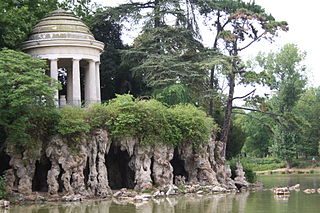
The Bois de Vincennes, located on the eastern edge of Paris, is the largest public park in the city. It was created between 1855 and 1866 by Emperor Napoleon III.

Gulf Islands National Seashore offers recreation opportunities and preserves natural and historic resources along the Gulf of Mexico barrier islands of Florida and Mississippi. The protected regions include mainland areas and parts of seven islands. Some islands along the Alabama coast were originally considered for inclusion, but none are part of the National Seashore.

The Forest of Argonne is a long strip of mountainous and wild woodland in northeastern France, approximately 200 km (120 mi) east of Paris. In 1792, Charles François Dumouriez outmaneuvered the invading forces of the Duke of Brunswick in the forest before the Battle of Valmy.

Dompierre-les-Ormes is a commune in the department of Saône-et-Loire in Bourgogne-Franche-Comté, France.

Petit Bois Island is a barrier island off the Mississippi Gulf Coast, south of Pascagoula, and one of the Mississippi–Alabama barrier islands. It is part of Jackson County, Mississippi. Since 1971 it has been a part of Gulf Islands National Seashore, administered by the U.S. National Park Service.
Hébert or Hebert may refer to:
The hybrid elm cultivar Ulmus × hollandica 'Modiolina', or Wheel-hub elm, was probably the large-leaved 'Orme tortillard' first described by Duhamel in De l'exploitation des bois (1764). Poederlé (1774) identified the tree as the 'orme maigre' growing in the region that later became part of Belgium. Dumont de Courset described a small-leaved U. campestris var. modiolina, "l'orme tortillard" in 1802 – the first use of the name 'Modiolina'. 'L'orme Tortillard', also known as 'l'orme à moyeux', was considered in France to be the best elm for use by wheelwrights, its timber especially suitable for hubs of wheels. Van Houtte marketed an U. campestris modiolina (tortuosa), and Späth an U. campestris modiolina, from the late 19th cenry. U. campestris var. modiolinaHort was confirmed as a hybrid by Chevalier in Les Ormes de France (1942) and called U. × 'Modiolina', 'l'orme à moyeux'.
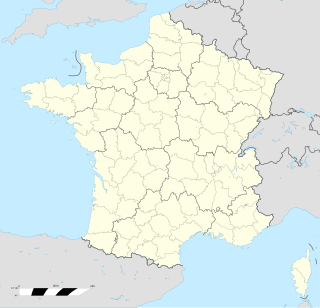
Ouvrage Mauvais-Bois is a petit ouvrage of the Fortified Sector of the Crusnes on the Maginot Line. It is located between the gros ouvrage Latiremont and the petit ouvrage Bois-du-Four, facing the Belgium/Luxembourg border. The original plan for the position was for two phases of construction, resulting in a gros ouvrage provided with heavy artillery. The increase in tension between France and Germany in the late 1930s caused resources to be diverted elsewhere, and only the first three combat blocks were built. In 1940 the ouvrage was regularly bombarded, but not directly attacked by German infantry. When the French military divested itself of the majority of the Maginot fortifications, Mauvais-Bois was the second to be sold.

Preux-au-Bois is a commune in the Nord department in northern France.
The Arboretum du Petit-Bois is an arboretum located in Montfaucon d'Argonne, Meuse, Lorraine, France. It was begun in 1996, contains about 50 types of trees, and is open daily without charge.
The Arboretum de Xertigny, also known as the Arboretum du Château des Brasseurs, is a municipal arboretum and park located at Mairie 1, le Château, Xertigny, Vosges, Grand Est, France. It is open daily without charge.
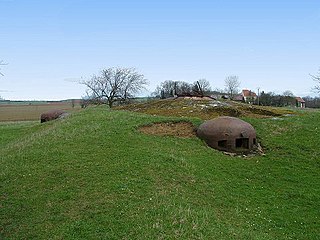
The Fortified Sector of the Crusnes was the French military organization that in 1940 controlled the section of the Maginot Line extending eastwards approximately 28 kilometres (17 mi) from Longuyon. The sector roughly follows the valley of the Crusnes river. Crucially, the trace of the Maginot Line in the Crusnes sector is about 7 kilometres (4.3 mi) behind the industrial city of Longwy which sits directly against the French borders with Belgium and Luxembourg. The Crusnes sector was one of the strongest Maginot Line sectors. It was attacked in 1940 by German forces in the Battle of France. Despite the withdrawal of the mobile forces that supported the fixed fortifications, the sector successfully fended off German assaults before the Second Armistice at Compiègne. The positions and their garrisons finally surrendered on 27 June 1940. Following the war many positions were reactivated for use during the Cold War. Three locations are now preserved and open to the public, with a fourth position under restoration.
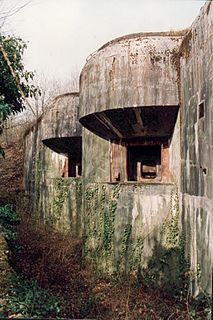
The Fortified Sector of Thionville was the French military organization that in 1940 controlled the section of the Maginot Line immediately to the north of Thionville. The sector describes an arc of about 25 kilometres (16 mi), about halfway between the French border with Luxembourg and Thionville. The Thionville sector was the strongest of the Maginot Line sectors. It was surrounded but not seriously attacked in 1940 by German forces in the Battle of France, whose main objective was the city of Metz. Despite the withdrawal of the mobile forces that supported the fixed fortifications, the sector successfully fended off German assaults before the Second Armistice at Compiègne. The majority of the positions and their garrisons finally surrendered on 27 June 1940, the remainder on 2 July. Following the war many positions were reactivated for use during the Cold War. Four locations are now preserved and open to the public.

Monvert Nature Park is a nature walk, arboretum, botanical gardens and rehabilitated indigenous forest, situated in Forest Side, Curepipe, Mauritius.
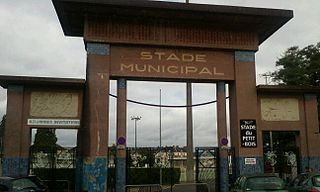
The Petit-Bois Stadium is a football stadium located at Charleville Mezieres in the region Champagne-Ardenne in France. It is currently the stadium for the resident team of OFC Charleville.

The Horn Island Light was a lighthouse in Mississippi originally located at the eastern end of Horn Island. Moved and rebuilt several times, it was deactivated and abandoned in 1961.












